View current major projects, which are investments we make with local partners to address safety, congestion, mobility for all users and/or fish passage responsibilities.
Major projects
Image
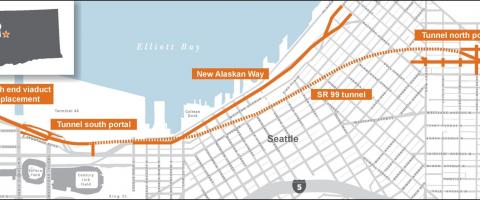
Alaskan Way Viaduct Replacement Program - Completed
The Alaskan Way Viaduct Replacement Program consisted of more than 30 projects led by the Washington State Department of Transportation and the City of Seattle. King County, the Port of Seattle and the Federal Highway Administration were key partners in this effort.Image

Cascadia High-Speed Rail and I-5 Program
The Cascadia High-Speed Rail and I-5 Program joins high-speed rail and I-5 system planning into one integrated program. This approach aims to meet future growth and transportation needs for the growing Cascadia Megaregion, which extends from the Portland, Oregon metropolitan area to the Vancouver, British Columbia metropolitan area. The Cascadia Program will coordinate with other travel modes along the corridor, including airports, regional transit and Amtrak Cascades, to plan and deliver investments that keep people and goods moving reliably into the future.Image
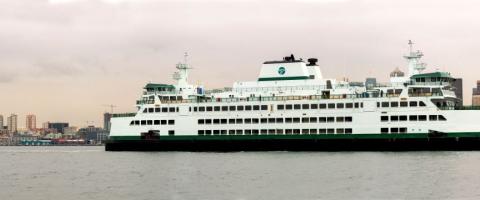
Ferry system electrification
Washington State Ferries (WSF) will rebuild and modernize our fleet and convert our system, the largest in the country, to hybrid-electric power by 2040 following direction from the Washington legislature and governor. Rebuilding the fleet is necessary to ensure reliable ferry service. Transitioning to a hybrid-electric fleet is necessary to reduce emissions, ensure resiliency, and reduce operations and maintenance costs.As the biggest contributor of greenhouse gas emissions among Washington state agencies, WSF burns approximately nineteen million gallons of diesel fuel to support nearly twenty million passengers every year. This innovative electrification program will…
Image
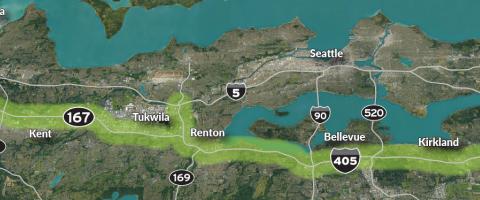
I-405/SR 167 Corridor Program
The I-405/SR 167 Corridor Program stems from the I-405 Master Plan and SR 167 Master Plan, foundational documents that guide project development, funding and delivery. The I-405 Master Plan alone includes over 150 projects designed to improve travel between Lynnwood and the Renton/Tukwila area. When combined with SR 167, this north-south corridor forms a 50+-mile transportation system providing travelers with a reliable trip in the express toll lanes, regular lanes and high-capacity transit (bus rapid transit).Image
I-5 - Mounts Road to Thorne Lane I/C - Corridor Improvements
In July 2015, the Washington State Legislature included $495 million to fund the I-5 Mounts Road to Thorne Lane Interchange - Corridor Improvements project, as part of the Connecting Washington transportation revenue package. The project is funded through a 10 year period, from 2015-2025.Image
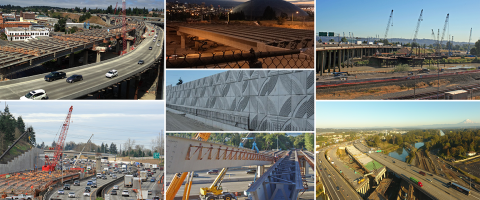
I-5 - SR 16 Tacoma/Pierce County HOV Program - Completed 2023
The Tacoma/Pierce County HOV Program was a series of projects, spanning over 20 years, that build high-occupancy-vehicle (HOV) lanes on I-5, SR 16 and SR 167 in Pierce County.Image
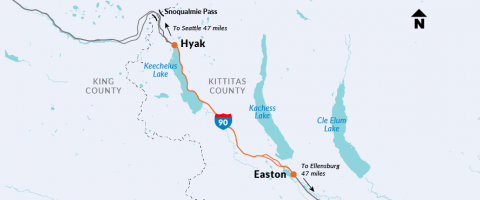
I-90 - Snoqualmie Pass East Project
The I-90 Snoqualmie Pass East Project improves 15 miles from Hyak to Easton. Phases 1 and 2 from Hyak to the Stampede Pass interchange are complete. Phase 3 is underway.Image
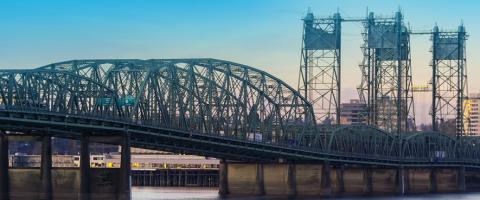
Interstate Bridge Replacement Program
The Interstate Bridge Replacement program is a bi-state effort with the Washington State Department of Transportation and the Oregon Department of Transportation to replace the aging Interstate Bridge along I-5 over the Columbia River between Portland and Vancouver. The program will build a new, seismically resilient multimodal bridge, reconfigure seven closely spaced interchanges in the five-mile corridor, extend light rail across the river, and add express bus on shoulder over the bridge. IBR program investments focus on safety and earthquake resilience, improve reliability, improve bike and pedestrian pathways, improve freight movement, and add public transit options for travelers in the…Image

North Spokane Corridor
The North Spokane Corridor (NSC) is a 10.5-mile multi-modal corridor. When complete, the NSC will be a 60-mile per hour, north/south limited access facility that connects I-90 at the south (just west of the existing Thor/Freya interchange) and connects to US 2 (at Farwell Road) and US 395 (at Wandermere) on the north end. Various stages of construction remain to complete the project.7 miles are now completed with only 3.5 left to go.
Image

Puget Sound Gateway Program
The Puget Sound Gateway Program combines the SR 509 Completion Project in King County and the SR 167 Completion Project in Pierce County to complete critical missing links in Washington state's highway and freight network. These projects build important new connections to the state's ports, improve the movement of freight and reduce congestion on local roads and highways. Both projects have multimodal benefits and together create 13.8 miles of new bike/pedestrian paths and 4.5 miles of new sidewalks.Image
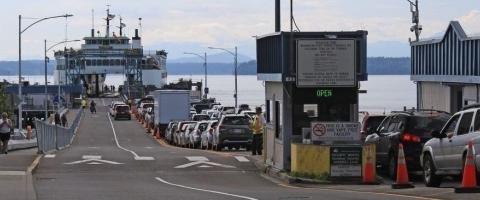
SR 160 - Fauntleroy Terminal - Trestle & Transfer Span Replacement
The SR 160 - Fauntleroy Terminal - Trestle & Transfer Span Replacement project will replace the aging terminal to maintain safe, reliable ferry service for people who travel between West Seattle, Vashon Island, the Kitsap Peninsula and beyond. The terminal is an essential transportation hub that serves more than 2.3 million riders annually, including people who board by walking, biking, driving and riding transit. Built in the 1950s, parts of the terminal are aging, seismically vulnerable and overdue for replacement.Project news: Next fall WSF plans to begin work to improve the intersection by installing a new traffic signal at Fauntleroy Way SW and the terminal.
Image
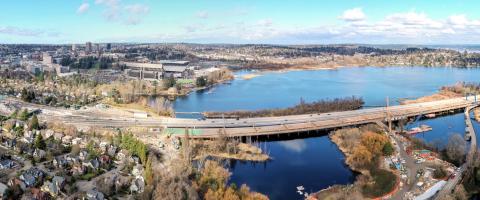
SR 520 Bridge Replacement and HOV Program
The SR 520 Bridge Replacement and HOV Program enhances travel safety and mobility with modern, structurally stronger bridges, as well as substantial transit and roadway improvements along this urban corridor. Built in stages, the improvements extend from I-405 in Bellevue to I-5 in Seattle.Slow down on ice and snow.
It's easier to skid or lose control traveling at higher speeds. Give yourself more time to stop.
Carry chains, practice installing them.
Winter conditions could mean chains are required on your route. Practice putting them on your vehicle ahead of time.
Pack your winter car kit.
Carry extra supplies like warm clothing, ice scraper and brush, jumper cables and other emergency items.
